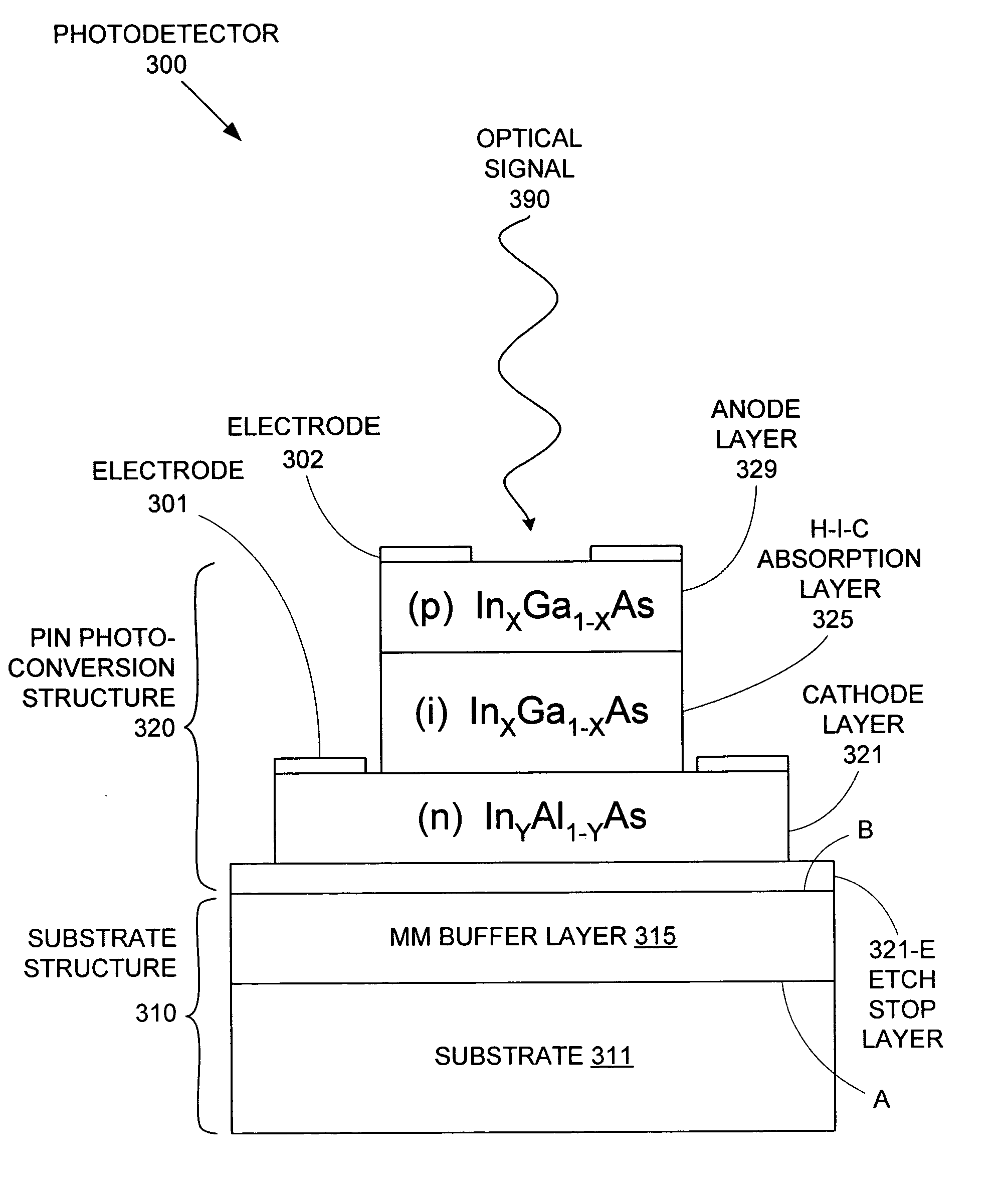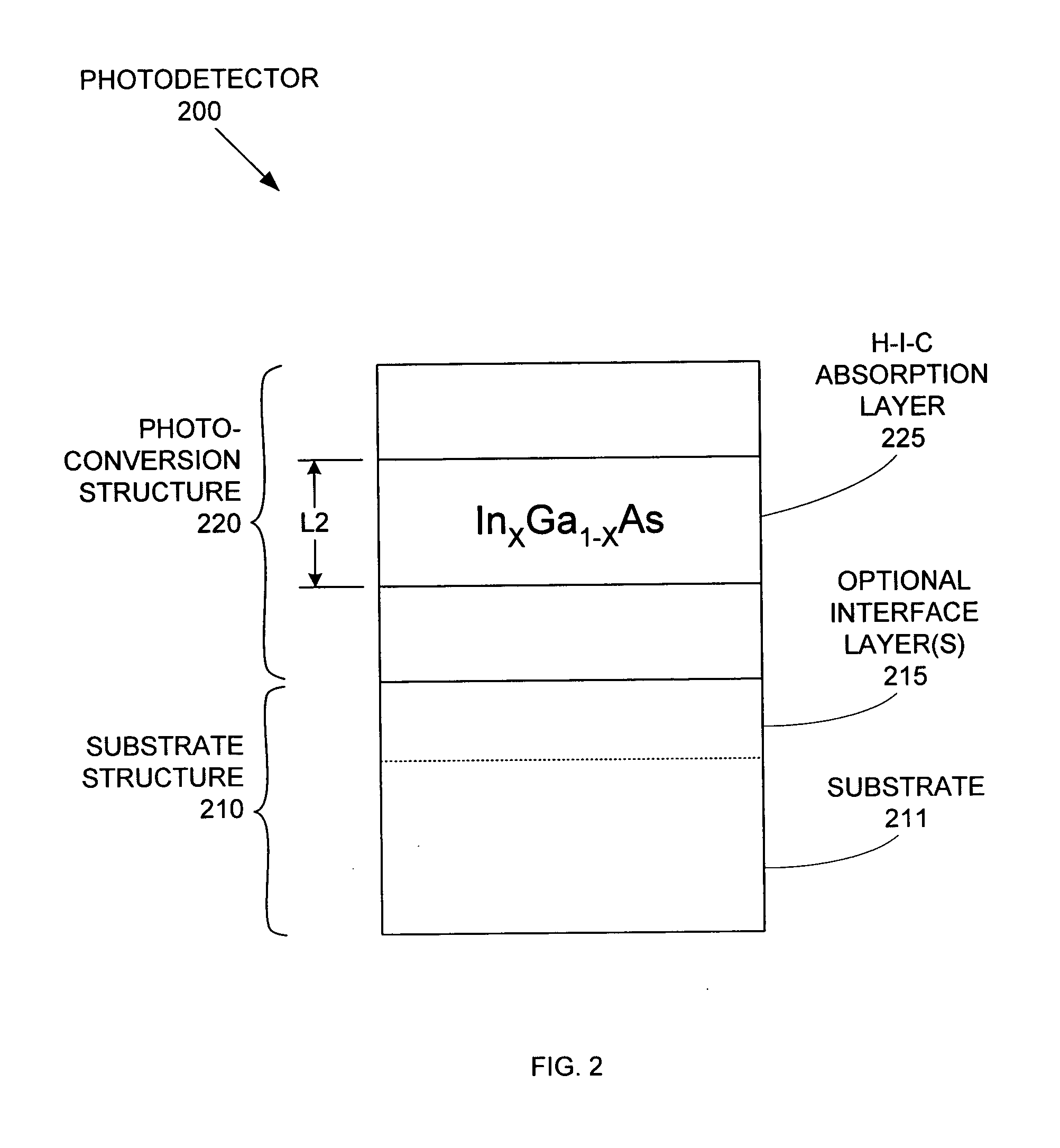Increased responsivity photodetector
- Summary
- Abstract
- Description
- Claims
- Application Information
AI Technical Summary
Benefits of technology
Problems solved by technology
Method used
Image
Examples
Embodiment Construction
FIG. 2 shows a cross-section of a photodetector 200 in accordance with an embodiment of the invention. Photodetector 200 includes a photoconversion structure 220 on a substrate structure 210. Photoconversion structure 220 performs the optical-to-electrical signal conversion, and includes a high-indium-concentration (H-I-C) absorption layer 225 formed from InGaAs. Specifically, H-I-C absorption layer 225 is formed from an InxGa1-xAs layer, where X is between 0.53 and 1.0. That is, the Group III sublattice concentration of indium is greater than 53% and less than 100%.
H-I-C absorption layer 225 is typically a non-intentionally doped (NID) layer. Note that photoconversion structure 220 can comprise any type of photoconversion structure (e.g., PIN (mesa-based or planar-diffused), dual path PIN, waveguide PIN, RCE, avalanche (also mesa-based or planar-diffused), and MSM photodiodes). Note further that substrate structure 210 can comprise an optional interface layer(s) 215 that accommoda...
PUM
 Login to View More
Login to View More Abstract
Description
Claims
Application Information
 Login to View More
Login to View More - R&D
- Intellectual Property
- Life Sciences
- Materials
- Tech Scout
- Unparalleled Data Quality
- Higher Quality Content
- 60% Fewer Hallucinations
Browse by: Latest US Patents, China's latest patents, Technical Efficacy Thesaurus, Application Domain, Technology Topic, Popular Technical Reports.
© 2025 PatSnap. All rights reserved.Legal|Privacy policy|Modern Slavery Act Transparency Statement|Sitemap|About US| Contact US: help@patsnap.com



